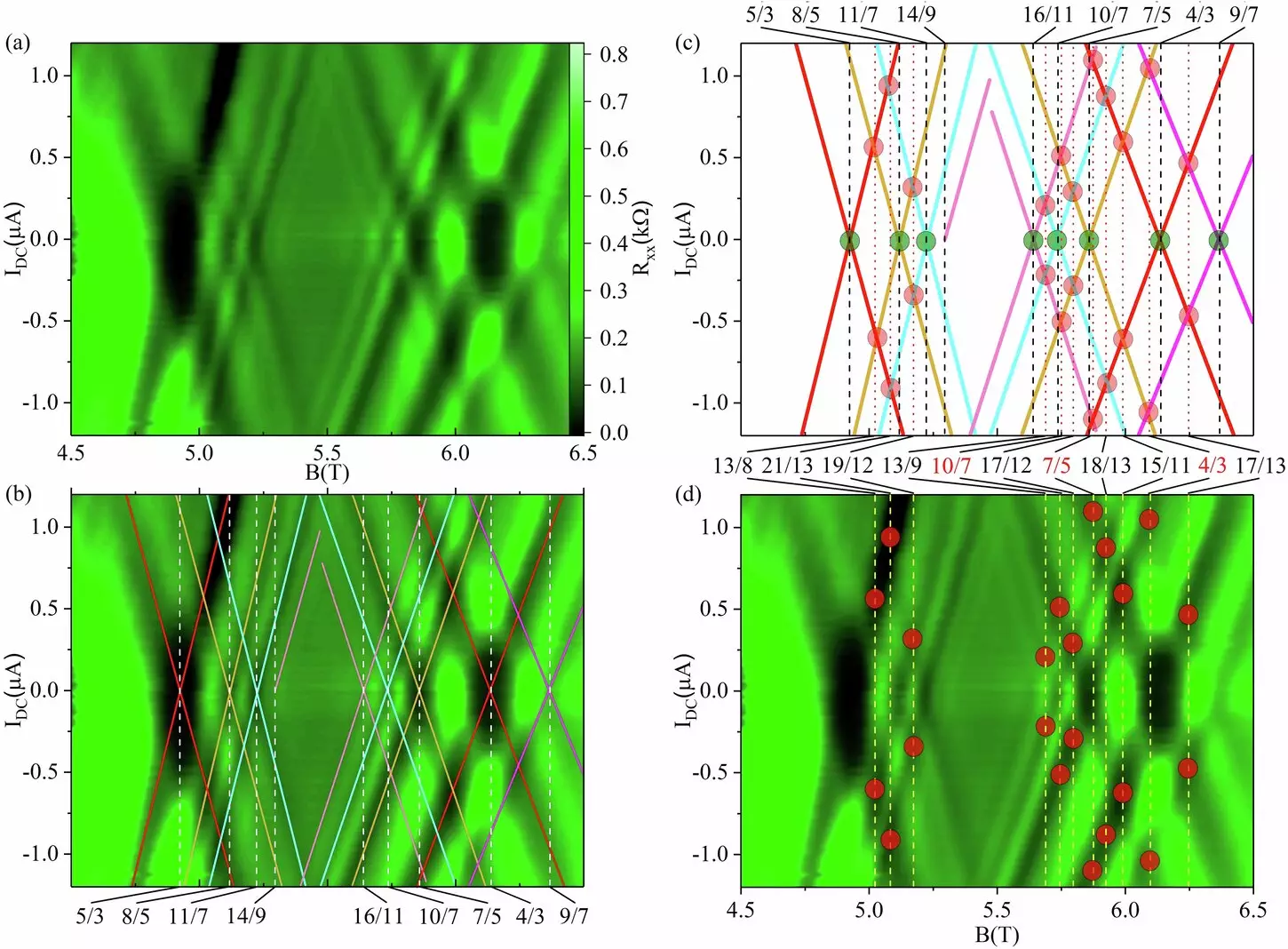In a groundbreaking study published in the journal Communications Physics, a team of researchers spearheaded by Professor Ramesh G. Mani from Georgia State University has turned conventional notions about two-dimensional physics on their head. Their exploration into the phenomena of fractional quantum Hall effects (FQHE) unveils a rich tapestry of physics in what can be termed a “flatland” environment. This research, featuring contributions from Ph.D. graduate U. Kushan Wijewardena, primarily investigates unexpected behaviors and new states that emerge when certain experimental conditions are radically changed.
The FQHE is noteworthy not only for its theoretical implications but also because it has long captivated physicists as they search for novel behaviors in low-dimensional systems. The fundamental premise stems from the realization that particles can exhibit characteristics that defy our three-dimensional intuitions. As Mani notes, these particles can indeed have “multiple personalities,” changing their behaviors based on different experimental conditions. This study takes a unique approach, pushing the limits of known physics and hinting at revolutionary applications and insights.
The Historical Context of Quantum Hall Effects
Since the initial discovery of the quantum Hall effect by Klaus von Klitzing in 1980—a revelation that earned him the Nobel Prize—this area of condensed matter physics has laid the groundwork for a series of Nobel-worthy achievements. The recognition awarded for the discovery of FQHE in 1998 underscored that particles in these two-dimensional systems could possess fractional charges rather than conventional whole-number charges. This discovery pivoted the understanding of how particles interact within constrained environments, driving future innovations in electronic materials, including graphene.
Graphene’s emergence as a revolutionary material showed the potential for massless electrons and stimulated additional research avenues that would again lead to Nobel Prizes in subsequent years. The cascade of discoveries originating from the quantum Hall effect has extensive implications across many domains, from enhancing electronics to driving advancements in materials science. As technology evolves and integrates these findings, the impact reverberates through industries, including telecommunications, renewable energy, and autonomous technology.
During an extensive series of experiments, the research team utilized advanced semiconductor devices composed of gallium arsenide (GaAs) and aluminum gallium arsenide (AlGaAs). These materials are vital for realizing the two-dimensional environments needed for probing FQHE. The researchers conducted their experiments under extreme conditions, approaching the absolute zero temperature of -459°F (-273°C) and employing a magnetic field nearly 100,000 times stronger than Earth’s. This intricate setup allowed them to apply supplementary currents to induce new phenomena within these systems.
This innovative experimentation led to the unexpected observation of split branches in the FQHE states and provided insight into previously inaccessible non-equilibrium states of matter. The study identifies these states not only as a new frontier in flatland physics but also emphasizes the necessity of precise materials, referencing the essential role played by high-quality crystals crafted at the Swiss Federal Institute of Technology Zurich.
The implications of the findings extend beyond theory, inviting possibilities that could reshape future technologies, including quantum computing, advanced materials, and energy-efficient devices. As the researchers challenge existing paradigms, they reveal a hybrid origin for these new non-equilibrium states, suggesting an unexplored territory ripe for investigation. The excitement expressed by Wijewardena aligns with the nature of scientific inquiry—where new discoveries often prompt more questions than answers.
Continuing their quest, the researchers are now preparing to explore even more extreme experimental conditions, aiming to unveil deeper complexities and refine measurement techniques in flatland physics. These insights not only enhance the understanding of quantum systems but also serve as a training ground for a new generation of physicists who will carry the torch of inquiry into the future.
In pushing the boundaries of condensed matter physics, Mani, Wijewardena, and their colleagues ignite a spark of curiosity that promises to lead to profound advancements in technology and knowledge, blending the realms of scientific discovery with real-world applications. As this frontier expands, the potential for innovation flourishes, illustrating how seemingly abstract research can have far-reaching implications in technology and our understanding of the universe.

